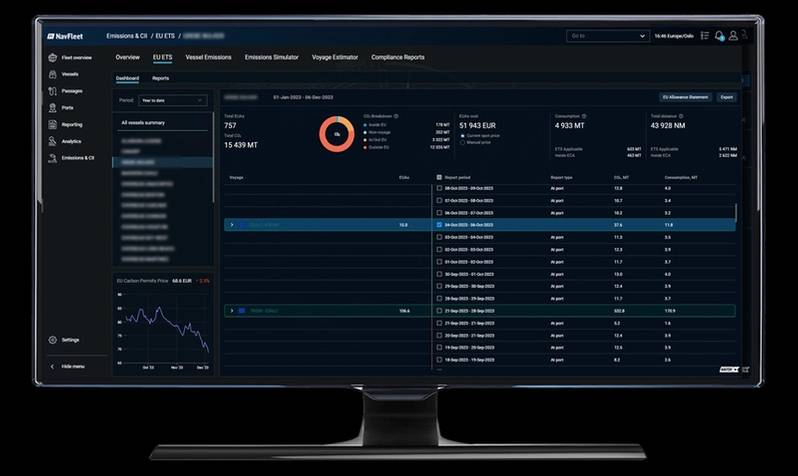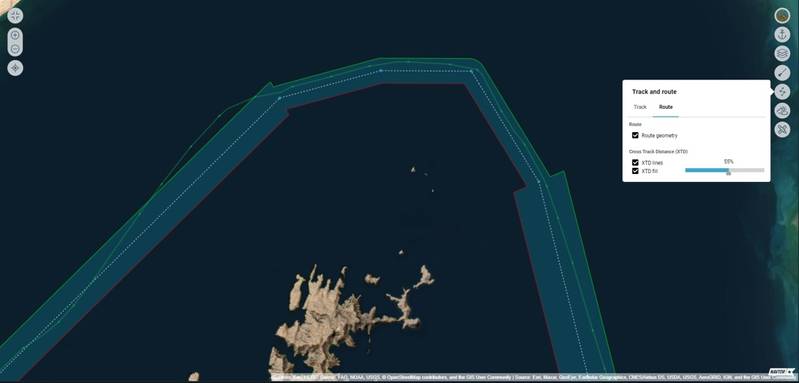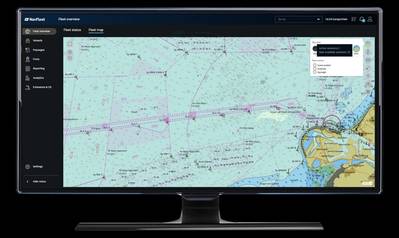NAVTOR: Simplifying Ships from Shore
In a climate of increasing complexity, with new regulations, environmental concerns and commercial considerations, how can owners and operators control their fleets, and futures, from dry land? NAVTOR’s Tor Håkon Svanes believes the answer lies in innovation and integration – developing solutions that evolve in line with the needs of a dynamic global industry.
“There are smarter ways to do things.”
Tor Håkon Svanes, the NavFleet Product Manager at NAVTOR, is referring to a recent chat with a new customer.
The unnamed fleet manager, who admitted to being somewhat stressed, was lamenting about the challenge of gathering emissions data from diverse vessels, and reporting platforms, and trying to streamline, organise and analyse it in a way that made sense in relation to CII compliance.
“He’d been juggling various spreadsheets and documents, looking at historical data in one place and estimates in another, and was, to be frank, using some colourful language about regulatory developments,” Svanes smiles, adding:
“I got the feeling it wasn’t the favourite part of his job.”
Big picture benefits
The same cannot be said about the NAVTOR man.
The challenge of simplifying complexity, of piecing together the industry’s puzzle to deliver one smart shipping big picture, appears to be what gets him out of bed in the morning.
“The difficulty, and motivation, lies in making this easy for everyone else,” he says.
“But with the right competency, resources and approach, digital solutions can be created to do the hard work for you. That leaves onshore teams free to do their main tasks – running safe, efficient and profitable shipping companies.”
The power of one
Svanes and his team have developed, and are continually developing, one such solution. NavFleet, originally launched in 2017, is billed as a “complete ship operations platform”. It works by integrating multiple streams of data - from vessels, shore-based facilities, and business-critical sources - into a single solution, empowering management teams to monitor, refine and improve ship- and fleet-wide performance.
It not only provides situational awareness and control, unlocking smarter decision making, but also automates and simplifies tasks – seamlessly gathering data across NAVTOR’s joined-up digital ecosystem.
“It sounds complex, but the benefits are easy to understand,” Svanes states, “and that’s particularly true when it comes to compliance.”
The latest NavFleet updates provide a powerful demonstration of just this point.
Staying one step ahead
Released in November last year, NavFleet 1.8 introduced an advanced Emissions Simulator to help customers navigate CII. This draws on data ranging from vessel noon reports to e-Navigation and performance data – all of which is computer- and human-validated – to gauge vessel and fleet historical emissions and model them for future predictions. Parameters can be easily changed, and vessels compared, to give in-depth insights into how assets will perform and what CII ratings they can expect. All without the need to juggle an ocean of different documents and service providers.
The just-released NavFleet 1.9 adds to this with a range of updates, including an EU ETS dashboard, statement and voyage estimator tailored to address this year’s new regulatory reality. This creates estimates of allowances, EUA statements and the necessary reports in an instant – empowering both compliance and the ability to transparently share both data and costs with charterers and freight owners.
With what seems like a constant flow of new regulations, such digital abilities are, Svanes opines, no longer a “nice to have” but a “must have”.

Inevitable evolution
“There’s a lot of excellent ship- and fleet managers out there, many of whom are very adept at using Excel sheets, various reports and a range of methods to work through required tasks,” he says.
“So, you could argue you don’t need this kind of integrated solution yet… perhaps for the next month, six months, or year. But it’s a fact of the matter that sooner or later you will. Complexity is increasing, regulatory and market demands are accelerating, and without the right digital tools it’ll be impossible to keep up.”
And indeed, as Svanes points out, why even try?
“The feedback we receive from the market is that customers want more innovation, automation and integration,” he says. “They want efficiency over inefficiency. They want less platforms, but more functionality from the solutions they do choose.
“At the end of the day that’s what we’re working towards with NavFleet – a fully integrated shoreside platform that management teams, and other stakeholders, rely on as their one-stop-shop.”
Moving targets
Svanes is honest enough to admit that “we’re not there yet”, noting that NavFleet must continually evolve in line with both industry demands and customer needs. As such, he reveals, 2024 will be “a busy year” for the team.
January’s 1.9 update also saw the introduction of online ENCs for shore-based teams, while a new earthquake and tsunami warning is on the cusp of being integrated now (“an important feature for our Japanese customers in particular”). The next major release in Spring will add a range of notifications to improve monitoring and situational awareness, in addition to further improvements on the Emission & CII Module.
Digital logbook integration should follow later in the year, while a late summer update will add a service helping users understand and plan for the FuelEU Maritime regulation, coming into force in January 2025.
“This is a further requirement targeting GHG emission intensity for ships trading in the EU, with added shore power requirements for container and passenger vessels,” he notes. “We’re refining the NavFleet module now to give our customers the ability to stay ahead of the regulatory game here, paving a way for simplified compliance as and when its needed.
“We partner with the industry to deliver what our global customers want, sometimes before they even know they want it!” Svanes adds with a smile. “That in-depth understanding gives NAVTOR a real advantage.”
And it’s not the only thing.

Voyaging to tomorrow
Although Svanes himself is a little too humble to admit it, NAVTOR is now in a position of clear global leadership within its specialist maritime technology niche.
In November the Norwegian-headquartered business acquired Voyager Worldwide, itself a major name in the world of e-Navigation and maritime innovation, creating a combined operation serving 18,000 vessels. The deal gives NAVTOR the network, size, customer base and added expertise to truly cement its position as “number one”, delivering on its vision of leading from the front to help enable a safe and sustainable future for the shipping industry.
“The value we can unlock from the acquisition really takes the business onto another level,” he notes. “But, more importantly, it means we can deliver even better solutions, faster.
“I think the move took a lot of people by surprise,” Svanes says, “but now the dust is settling the industry can see both the benefits of the union and a very concrete manifestation of our ambition.”
Dedicated developments
His own ambition appears to be burning just as brightly as the company’s. Svanes says he’s happy with the progress NavFleet is making, but when asked if he’s “satisfied” he has to pause for thought.
When an answer does come it’s along the lines of “I’m not sure I can be.” He explains that his constant interaction with customers and colleagues, and the nature of the industry, means that “there’s always going to be work to do.”
“There’s no such thing as the perfect solution,” he comments, “particularly when the commercial, technological, and regulatory landscape is continually shifting.
“However, by staying close to the industry, being at the core of the latest research projects (NAVTOR is currently leading the Green AI for Sustainable Shipping, GASS, initiative) and constantly developing our own competency – something boosted by the Voyager deal – we can ensure we offer our customers the very best smart shipping solutions available. NavFleet, I believe, is a prime example of that.”
There’s at least one now de-stressed fleet manager that would no doubt agree with him.


















